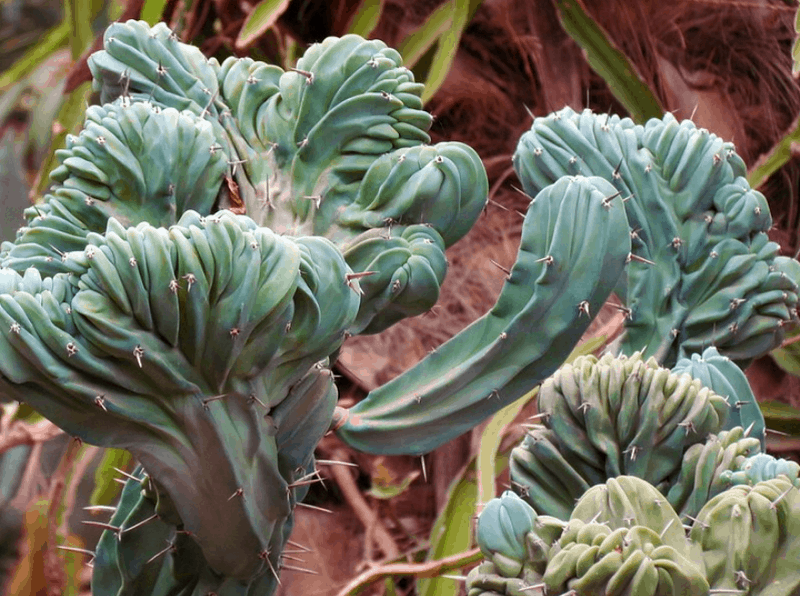Myrtillocactus geometrizans forma cristata “Dinosaur Back Plant” is a shrubby fleshy plant, which belongs to the Cactaceae family and its place of origin is Mexico.
Also known as Dinosaur Back Plant, Crested Blue Candle.
This plant is one of the most used cacti as a pattern in cactus grafts, due to its high resistance and great vigor that transmits it to the grafted species.
It is also used for this purpose because it has very few thorns and is easy to grow.
It is also a slow-growing plant that requires several years to reach adulthood and to bloom for the first time.
The Myrtillocactus geometrizans forma cristata form can reach approximately 4 meters high. And the stems in this species can exceed 3 meters high and 8 cm in diameter.
They usually have small spines and not very abundant.
They produce small white flowers that arise from the top of the cactus.
They bloom in spring.
You may like peperomia graveolens
Tips to take care of the Myrtillocactus geometrizans forma cristata
Illumination
The Myrtillocactus geometrizans cristata form that exceed 120 cm in height should be grown in full sun throughout the year.
But smaller plants need some shade during the hottest hours of the day to avoid possible burns.
This species should not be grown in poorly lit interiors because plant growth could be stopped completely.
Substratum
It grows well on a wide variety of substrates as long as they allow rapid drainage of irrigation water and are very aerated.
Unlike other cacti, this species prefers a nutrient-rich substrate and thus grow better.
Temperatures
This plant prefers a cool or warm climate where temperatures remain between 16ºC to 28ºC.
It can tolerate temperatures below 10ºC, but if the temperatures fall further it can cause damage to the external tissues of the stems, it can affect the aesthetics and / or cause fungi in the plant.
Irrigation
This plant needs very little water to grow. For this reason, it is very important to avoid watering the plant in excess.
In hot weather, the plant can be irrigated with some frequency, once the substrate is dry it can re-water the plant again.
In winter or rainy seasons, it is important to leave the substrate completely dry before the next irrigation and thus avoid rotting in the roots of the plant.
Plagues and diseases
The Myrtillocactus geometrizans forma cristata is mainly attacked by mealybugs, which invade bare stems.
Usually, the highest concentration of this pest is observed at the end of growing stems where the epidermis is softer.
Another disease that can attack this plant is excessive irrigation.
If the substrate is kept wet for a long time, it can cause fungus, root rot or even cause the death of the plant.
Propagation
The spread of this plant is very simple. It can be enhanced from seeds or cuttings of stems.
The cutting is more effective during the hot seasons because the high temperatures encourage rooting.
Seeds germinate rapidly and seedlings tend to be quite resistant from an early age.
The best time to plant this plant is in spring.
You should only use a small pot and add a special substrate for cacti and succulents with good drainage.
Then spread the seeds on top of the substrate, and add a very light layer of the substrate to the seeds.
Keep the substrate moist (but avoid waterlogging), and keep the pot in a place where it receives good sunlight.
Once the plant is ripe and suitable for manipulation, it can be transplanted into a definitive pot.
Pruning
This plant does not need to be pruned. Only remove the leaves that are battered or dry, so that the plant looks better.
Fertilizer
This plant thanks to be paid once a month, during spring and summer, with mineral fertilizer for cacti and thus grow in a healthy way.
